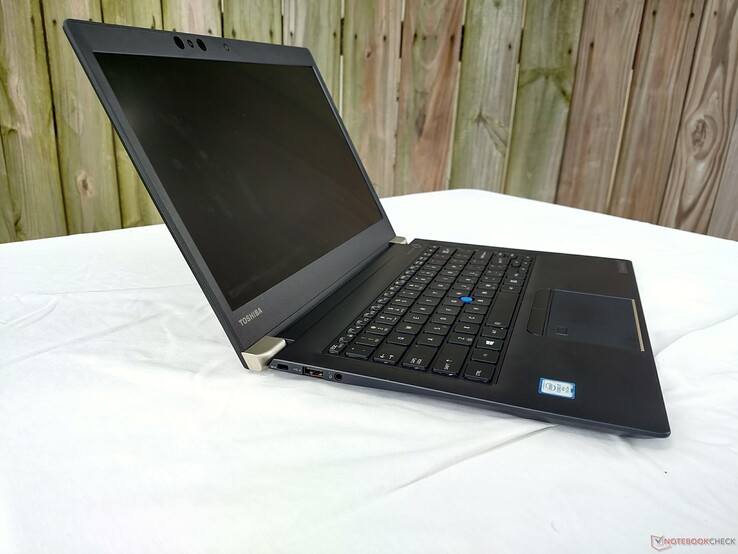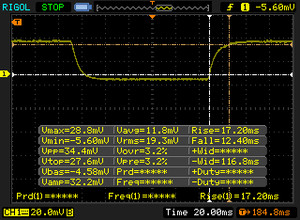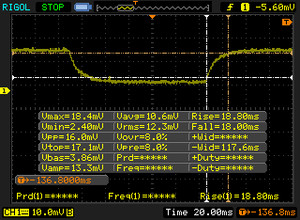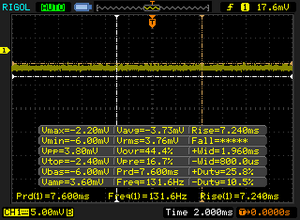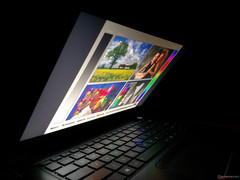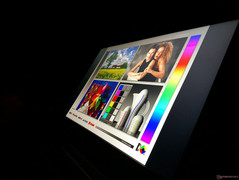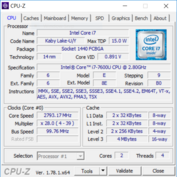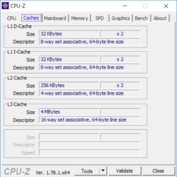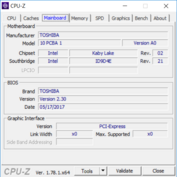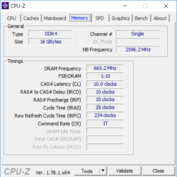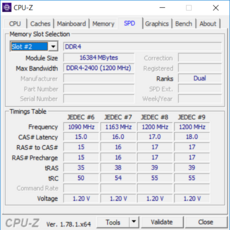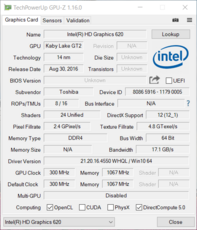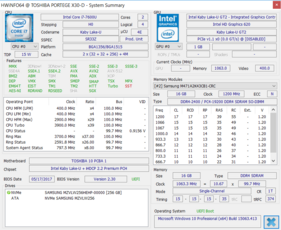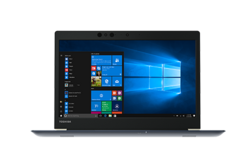Recensione breve del Portatile Toshiba Portégé X30 (i7-7600U, 256 GB)
I nostri Top 10
» Top 10 Portatili Multimedia
» Top 10 Portatili Gaming
» Top 10 Portatili Gaming Leggeri
» Top 10 Portatili da Ufficio e Business economici
» Top 10 Portatili Premium da Ufficio/Business
» Top 10 Portatili sotto i 300 Euro
» Top 10 Portatili sotto i 500 Euro
» Top 10 dei Portatili Workstation
» Top 10 Subnotebooks
» Top 10 Ultrabooks
» Top 10 Convertibili
» Top 10 Tablets
» Top 10 Tablets Windows
» Top 10 Smartphones
| SD Card Reader | |
| average JPG Copy Test (av. of 3 runs) | |
| Dell XPS 13 9360 FHD i7 Iris | |
| Lenovo ThinkPad T470s-20HF0012US | |
| Toshiba Portege X30-D (PT274U-01N001) | |
| Lenovo ThinkPad X1 Carbon 2017-20HQS03P00 | |
| maximum AS SSD Seq Read Test (1GB) | |
| Dell XPS 13 9360 FHD i7 Iris | |
| Lenovo ThinkPad T470s-20HF0012US | |
| Toshiba Portege X30-D (PT274U-01N001) | |
| Lenovo ThinkPad X1 Carbon 2017-20HQS03P00 | |
| |||||||||||||||||||||||||
Distribuzione della luminosità: 86 %
Al centro con la batteria: 332.6 cd/m²
Contrasto: 1188:1 (Nero: 0.28 cd/m²)
ΔE ColorChecker Calman: 2.6 | ∀{0.5-29.43 Ø4.77}
ΔE Greyscale Calman: 2.5 | ∀{0.09-98 Ø5}
94% sRGB (Argyll 1.6.3 3D)
62% AdobeRGB 1998 (Argyll 1.6.3 3D)
66.6% AdobeRGB 1998 (Argyll 3D)
93.5% sRGB (Argyll 3D)
66.4% Display P3 (Argyll 3D)
Gamma: 2.12
CCT: 6720 K
| Toshiba Portege X30-D (PT274U-01N001) Toshiba TOS508F, IPS, 13.3", 1920x1080 | Lenovo ThinkPad X1 Carbon 2017-20HQS03P00 B140HAN03_1, IPS, 14", 1920x1080 | Lenovo ThinkPad T470s-20HF0012US LEN40A9 (R140NWF5 R1), IPS, 14", 1920x1080 | Apple MacBook 12 2017 APPA027, LED IPS, 12", 2304x1440 | HP Spectre 13-v131ng CMN1374, IPS UWVA, 13.3", 1920x1080 | |
|---|---|---|---|---|---|
| Display | -7% | -37% | -4% | ||
| Display P3 Coverage (%) | 66.4 | 61.4 -8% | 40.35 -39% | 64.6 -3% | |
| sRGB Coverage (%) | 93.5 | 85.9 -8% | 60.3 -36% | 88.8 -5% | |
| AdobeRGB 1998 Coverage (%) | 66.6 | 62.4 -6% | 41.72 -37% | 64.8 -3% | |
| Response Times | -10% | -4% | -5% | -18% | |
| Response Time Grey 50% / Grey 80% * (ms) | 36.8 ? | 41.6 ? -13% | 40.8 ? -11% | 40.8 ? -11% | 46 ? -25% |
| Response Time Black / White * (ms) | 29.6 ? | 31.6 ? -7% | 28.8 ? 3% | 29.2 ? 1% | 33 ? -11% |
| PWM Frequency (Hz) | 219.3 ? | 116000 | |||
| Screen | -31% | -60% | -30% | ||
| Brightness middle (cd/m²) | 332.6 | 311 -6% | 271.6 -18% | 404 21% | |
| Brightness (cd/m²) | 323 | 288 -11% | 264 -18% | 382 18% | |
| Brightness Distribution (%) | 86 | 85 -1% | 88 2% | 91 6% | |
| Black Level * (cd/m²) | 0.28 | 0.24 14% | 0.24 14% | 0.35 -25% | |
| Contrast (:1) | 1188 | 1296 9% | 1132 -5% | 1154 -3% | |
| Colorchecker dE 2000 * | 2.6 | 5.5 -112% | 6.1 -135% | 5.37 -107% | |
| Colorchecker dE 2000 max. * | 6.7 | 9 -34% | 28.6 -327% | 9.46 -41% | |
| Greyscale dE 2000 * | 2.5 | 6.2 -148% | 3.4 -36% | 6.44 -158% | |
| Gamma | 2.12 104% | 2.02 109% | 2.12 104% | 2.52 87% | |
| CCT | 6720 97% | 5950 109% | 6077 107% | 6738 96% | |
| Color Space (Percent of AdobeRGB 1998) (%) | 62 | 55.96 -10% | 38 -39% | 58 -6% | |
| Color Space (Percent of sRGB) (%) | 94 | 85.77 -9% | 60 -36% | 89 -5% | |
| Media totale (Programma / Settaggio) | -16% /
-23% | -34% /
-48% | -5% /
-5% | -17% /
-23% |
* ... Meglio usare valori piccoli
Tempi di risposta del Display
| ↔ Tempi di risposta dal Nero al Bianco | ||
|---|---|---|
| 29.6 ms ... aumenta ↗ e diminuisce ↘ combinato | ↗ 17.2 ms Incremento | |
| ↘ 12.4 ms Calo | ||
| Lo schermo mostra tempi di risposta relativamente lenti nei nostri tests e potrebbe essere troppo lento per i gamers. In confronto, tutti i dispositivi di test variano da 0.1 (minimo) a 240 (massimo) ms. » 78 % di tutti i dispositivi è migliore. Questo significa che i tempi di risposta rilevati sono peggiori rispetto alla media di tutti i dispositivi testati (20.2 ms). | ||
| ↔ Tempo di risposta dal 50% Grigio all'80% Grigio | ||
| 36.8 ms ... aumenta ↗ e diminuisce ↘ combinato | ↗ 18.8 ms Incremento | |
| ↘ 18 ms Calo | ||
| Lo schermo mostra tempi di risposta lenti nei nostri tests e sarà insoddisfacente per i gamers. In confronto, tutti i dispositivi di test variano da 0.165 (minimo) a 636 (massimo) ms. » 52 % di tutti i dispositivi è migliore. Questo significa che i tempi di risposta rilevati sono peggiori rispetto alla media di tutti i dispositivi testati (31.6 ms). | ||
Sfarfallio dello schermo / PWM (Pulse-Width Modulation)
| flickering dello schermo / PWM non rilevato | |||
In confronto: 53 % di tutti i dispositivi testati non utilizza PWM per ridurre la luminosita' del display. Se è rilevato PWM, una media di 8088 (minimo: 5 - massimo: 343500) Hz è stata rilevata. | |||
| Cinebench R11.5 | |
| CPU Single 64Bit | |
| Toshiba Portege X30-D (PT274U-01N001) | |
| Lenovo ThinkPad T470s-20HF0012US | |
| HP Spectre 13-v131ng | |
| CPU Multi 64Bit | |
| Lenovo ThinkPad T470s-20HF0012US | |
| Toshiba Portege X30-D (PT274U-01N001) | |
| HP Spectre 13-v131ng | |
| Cinebench R10 | |
| Rendering Multiple CPUs 32Bit | |
| Toshiba Portege X30-D (PT274U-01N001) | |
| HP Spectre 13-v131ng | |
| Rendering Single 32Bit | |
| Toshiba Portege X30-D (PT274U-01N001) | |
| HP Spectre 13-v131ng | |
| wPrime 2.10 - 1024m | |
| Toshiba Portege X30-D (PT274U-01N001) | |
| Lenovo ThinkPad T470s-20HF0012US | |
* ... Meglio usare valori piccoli
| PCMark 7 Score | 5667 punti | |
| PCMark 8 Home Score Accelerated v2 | 3543 punti | |
| PCMark 8 Creative Score Accelerated v2 | 4561 punti | |
| PCMark 8 Work Score Accelerated v2 | 4910 punti | |
Aiuto | ||
| Toshiba Portege X30-D (PT274U-01N001) Samsung PM961 MZVLW256HEHP | Lenovo ThinkPad X1 Carbon 2017-20HQS03P00 Samsung PM961 NVMe MZVLW512HMJP | Lenovo ThinkPad T470s-20HF0012US Samsung PM961 MZVLW256HEHP | Apple MacBook 12 2017 Apple SSD AP0256 | HP Spectre 13-v131ng Samsung PM961 NVMe MZVLW512HMJP | |
|---|---|---|---|---|---|
| CrystalDiskMark 3.0 | 19% | 8% | -39% | -3% | |
| Read Seq (MB/s) | 1270 | 1827 44% | 1399 10% | 955 -25% | 1090 -14% |
| Write Seq (MB/s) | 1213 | 1383 14% | 1213 0% | 899 -26% | 1088 -10% |
| Read 512 (MB/s) | 858 | 814 -5% | 831 -3% | 658 -23% | 753 -12% |
| Write 512 (MB/s) | 763 | 1098 44% | 856 12% | 579 -24% | 911 19% |
| Read 4k (MB/s) | 40.9 | 61 49% | 60.7 48% | 9.721 -76% | 57.5 41% |
| Write 4k (MB/s) | 143.6 | 172.2 20% | 159.2 11% | 12.78 -91% | 140.2 -2% |
| Read 4k QD32 (MB/s) | 626 | 601 -4% | 580 -7% | 521 -17% | 497.1 -21% |
| Write 4k QD32 (MB/s) | 536 | 495.6 -8% | 499.4 -7% | 370.1 -31% | 416 -22% |
| 3DMark | |
| 1280x720 Cloud Gate Standard Graphics | |
| Dell XPS 13 9360 FHD i7 Iris | |
| Lenovo ThinkPad X1 Carbon 2017-20HQS03P00 | |
| Lenovo ThinkPad T470s-20HF0012US | |
| HP Spectre 13-v131ng | |
| Toshiba Portege X30-D (PT274U-01N001) | |
| Apple MacBook 12 2017 | |
| 1920x1080 Fire Strike Graphics | |
| Dell XPS 13 9360 FHD i7 Iris | |
| Lenovo ThinkPad X1 Carbon 2017-20HQS03P00 | |
| Lenovo ThinkPad T470s-20HF0012US | |
| HP Spectre 13-v131ng | |
| Toshiba Portege X30-D (PT274U-01N001) | |
| 1920x1080 Ice Storm Extreme Graphics | |
| HP Spectre 13-v131ng | |
| Toshiba Portege X30-D (PT274U-01N001) | |
| 3DMark 11 Performance | 1577 punti | |
| 3DMark Ice Storm Standard Score | 52149 punti | |
| 3DMark Cloud Gate Standard Score | 5812 punti | |
| 3DMark Fire Strike Score | 780 punti | |
Aiuto | ||
Rumorosità
| Idle |
| 28.4 / 28.4 / 28.4 dB(A) |
| Sotto carico |
| 33.2 / 37.9 dB(A) |
 | ||
30 dB silenzioso 40 dB(A) udibile 50 dB(A) rumoroso |
||
min: | ||
| Toshiba Portege X30-D (PT274U-01N001) HD Graphics 620, i7-7600U, Samsung PM961 MZVLW256HEHP | Lenovo ThinkPad X1 Carbon 2017-20HQS03P00 HD Graphics 620, i7-7500U, Samsung PM961 NVMe MZVLW512HMJP | Lenovo ThinkPad T470s-20HF0012US HD Graphics 620, i5-7300U, Samsung PM961 MZVLW256HEHP | Apple MacBook 12 2017 HD Graphics 615, m3-7Y32, Apple SSD AP0256 | HP Spectre 13-v131ng HD Graphics 620, i7-7500U, Samsung PM961 NVMe MZVLW512HMJP | Dell XPS 13 9360 FHD i7 Iris Iris Plus Graphics 640, i7-7560U, Toshiba XG4 NVMe (THNSN5512GPUK) | |
|---|---|---|---|---|---|---|
| Noise | -5% | -1% | -9% | -3% | ||
| off /ambiente * (dB) | 28.4 | 29.3 -3% | 27.8 2% | 30.4 -7% | 29.9 -5% | |
| Idle Minimum * (dB) | 28.4 | 29.3 -3% | 27.8 2% | 30.4 -7% | 29.9 -5% | |
| Idle Average * (dB) | 28.4 | 29.3 -3% | 27.8 2% | 30.4 -7% | 29.9 -5% | |
| Idle Maximum * (dB) | 28.4 | 32.2 -13% | 27.8 2% | 30.4 -7% | 30.3 -7% | |
| Load Average * (dB) | 33.2 | 34.3 -3% | 34.8 -5% | 40 -20% | 33.9 -2% | |
| Load Maximum * (dB) | 37.9 | 39.3 -4% | 42 -11% | 40 -6% | 34.9 8% | |
| Witcher 3 ultra * (dB) | 42 |
* ... Meglio usare valori piccoli
(±) La temperatura massima sul lato superiore è di 40.6 °C / 105 F, rispetto alla media di 34.3 °C / 94 F, che varia da 21.2 a 62.5 °C per questa classe Office.
(±) Il lato inferiore si riscalda fino ad un massimo di 40 °C / 104 F, rispetto alla media di 36.8 °C / 98 F
(+) In idle, la temperatura media del lato superiore è di 26.7 °C / 80 F, rispetto alla media deld ispositivo di 29.5 °C / 85 F.
(+) I poggiapolsi e il touchpad sono piu' freddi della temperatura della pelle con un massimo di 27.2 °C / 81 F e sono quindi freddi al tatto.
(±) La temperatura media della zona del palmo della mano di dispositivi simili e'stata di 27.6 °C / 81.7 F (+0.4 °C / 0.7 F).
Toshiba Portege X30-D (PT274U-01N001) analisi audio
(±) | potenza degli altiparlanti media ma buona (77 dB)
Bassi 100 - 315 Hz
(-) | quasi nessun basso - in media 16.7% inferiori alla media
(±) | la linearità dei bassi è media (14.2% delta rispetto alla precedente frequenza)
Medi 400 - 2000 Hz
(+) | medi bilanciati - solo only 2.6% rispetto alla media
(+) | medi lineari (6.8% delta rispetto alla precedente frequenza)
Alti 2 - 16 kHz
(+) | Alti bilanciati - appena 3.5% dalla media
(±) | la linearità degli alti è media (9.3% delta rispetto alla precedente frequenza)
Nel complesso 100 - 16.000 Hz
(±) | la linearità complessiva del suono è media (19.7% di differenza rispetto alla media
Rispetto alla stessa classe
» 40% di tutti i dispositivi testati in questa classe è stato migliore, 8% simile, 52% peggiore
» Il migliore ha avuto un delta di 7%, medio di 21%, peggiore di 53%
Rispetto a tutti i dispositivi testati
» 49% di tutti i dispositivi testati in questa classe è stato migliore, 7% similare, 44% peggiore
» Il migliore ha avuto un delta di 4%, medio di 24%, peggiore di 134%
HP Spectre 13-v131ng analisi audio
(-) | altoparlanti non molto potenti (68 dB)
Bassi 100 - 315 Hz
(-) | quasi nessun basso - in media 23.8% inferiori alla media
(±) | la linearità dei bassi è media (9.6% delta rispetto alla precedente frequenza)
Medi 400 - 2000 Hz
(±) | medi ridotti - circa 5.1% inferiori alla media
(±) | linearità dei medi adeguata (7.6% delta rispetto alla precedente frequenza)
Alti 2 - 16 kHz
(±) | alti elevati - circa 7.7% superiori alla media
(+) | alti lineari (3.1% delta rispetto alla precedente frequenza)
Nel complesso 100 - 16.000 Hz
(±) | la linearità complessiva del suono è media (28.6% di differenza rispetto alla media
Rispetto alla stessa classe
» 90% di tutti i dispositivi testati in questa classe è stato migliore, 2% simile, 8% peggiore
» Il migliore ha avuto un delta di 5%, medio di 18%, peggiore di 53%
Rispetto a tutti i dispositivi testati
» 86% di tutti i dispositivi testati in questa classe è stato migliore, 3% similare, 12% peggiore
» Il migliore ha avuto un delta di 4%, medio di 24%, peggiore di 134%
| Off / Standby | |
| Idle | |
| Sotto carico |
|
Leggenda:
min: | |
| Toshiba Portege X30-D (PT274U-01N001) i7-7600U, HD Graphics 620, Samsung PM961 MZVLW256HEHP, IPS, 1920x1080, 13.3" | Lenovo ThinkPad X1 Carbon 2017-20HQS03P00 i7-7500U, HD Graphics 620, Samsung PM961 NVMe MZVLW512HMJP, IPS, 1920x1080, 14" | Lenovo ThinkPad T470s-20HF0012US i5-7300U, HD Graphics 620, Samsung PM961 MZVLW256HEHP, IPS, 1920x1080, 14" | Apple MacBook 12 2017 m3-7Y32, HD Graphics 615, Apple SSD AP0256, LED IPS, 2304x1440, 12" | HP Spectre 13-v131ng i7-7500U, HD Graphics 620, Samsung PM961 NVMe MZVLW512HMJP, IPS UWVA, 1920x1080, 13.3" | |
|---|---|---|---|---|---|
| Power Consumption | -24% | -20% | 29% | -8% | |
| Idle Minimum * (Watt) | 4.6 | 3.84 17% | 4.8 -4% | 2 57% | 3.6 22% |
| Idle Average * (Watt) | 7.6 | 6.3 17% | 6.6 13% | 5.4 29% | 6.4 16% |
| Idle Maximum * (Watt) | 8.2 | 8.6 -5% | 7 15% | 6.6 20% | 9.2 -12% |
| Load Average * (Watt) | 23.8 | 41.9 -76% | 39.2 -65% | 22 8% | 34 -43% |
| Load Maximum * (Watt) | 28 | 48.7 -74% | 44.8 -60% | 20 29% | 34.4 -23% |
* ... Meglio usare valori piccoli
| Toshiba Portege X30-D (PT274U-01N001) i7-7600U, HD Graphics 620, 48 Wh | Lenovo ThinkPad X1 Carbon 2017-20HQS03P00 i7-7500U, HD Graphics 620, 57 Wh | Lenovo ThinkPad T470s-20HF0012US i5-7300U, HD Graphics 620, 51 Wh | Apple MacBook 12 2017 m3-7Y32, HD Graphics 615, 41.4 Wh | HP Spectre 13-v131ng i7-7500U, HD Graphics 620, 38 Wh | |
|---|---|---|---|---|---|
| Autonomia della batteria | 15% | 25% | 25% | -21% | |
| Reader / Idle (h) | 15 | 20.9 39% | 17.7 18% | 12 -20% | |
| WiFi v1.3 (h) | 7.2 | 8.3 15% | 8.1 13% | 9 25% | 6.6 -8% |
| Load (h) | 2 | 1.8 -10% | 2.9 45% | 1.3 -35% |
Pro
Contro
Toshiba ha creato un buon contendente. Il Portégé X30 è un portento di ingegneria; in un case molto sottile c'è davvero tanto. Due porte Thunderbolt 3 aiutano l'I/O. L'X30 offre abbastanza porte davvero utili. Ma preferiamo la soluzione dell'X1 Carbon, nonostante peso e dimensioni maggiori. Gli utenti potrebbero anche preferire una tastiera superiore e la manutenzione dell'X1, rende difficile la scelta tra Toshiba e Lenovo.
Il peso contenuto si fa sentire sulla robustezza dello chassis. La tastiera e il pannello inferiore quasi non si flettono, cosa che impressiona. Tuttavia la cover si flette se si applica pressione; e può essere un problema alla lunga. La tastiera è mediocre con un layout frustrante e accumula ditate. Ma la principale pecca sono le prestazioni del processore. Il Core i7-7600U è molto meglio sulla carta che nel concreto. Notiamo throttling (per controllare le temperature), e limitazione della CPU L'X30 è più lento dei concorrenti nei benchmarks ma comunque nell'utilizzo quotidiano va bene.
Nel complesso il Toshiba Portégé X30 è un portatile eccellente da portare ing giro e per gli utenti business che viaggiano molto. Le dotazioni I/O, lo schermo, e lo chassis sono i punti di forza di questo delizioso dispositivo. così come lo scanner dell'iride e i tre anni di garanzia.
Nota: si tratta di una recensione breve, con alcune sezioni non tradotte, per la versione integrale in inglese guardate qui.
Toshiba Portege X30-D (PT274U-01N001)
- 06/27/2017 v6 (old)
Sam Medley




